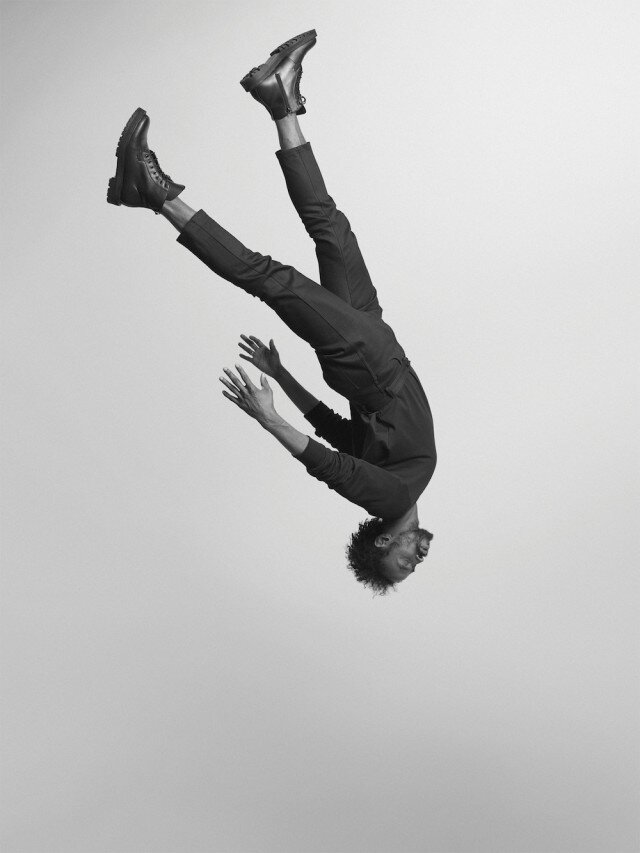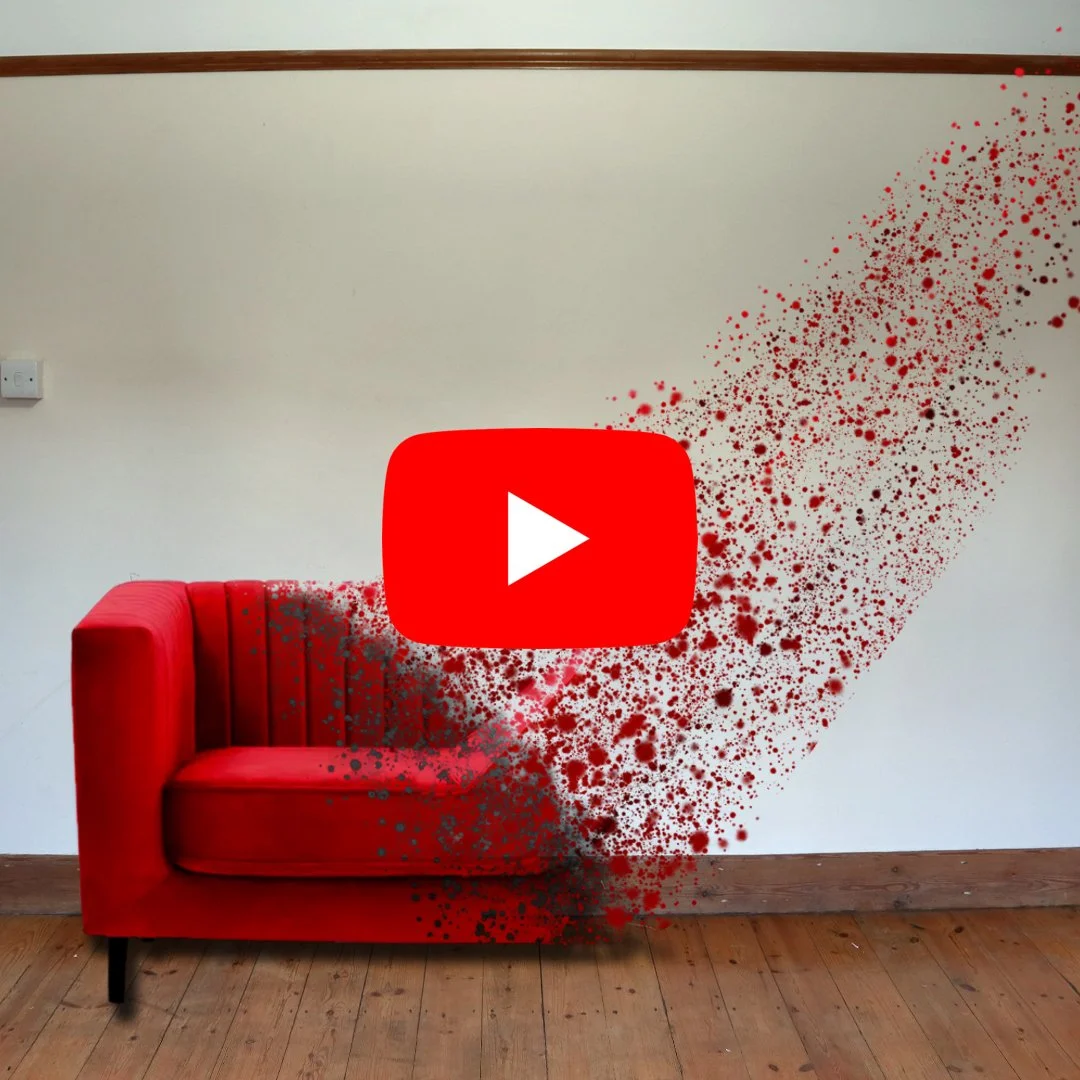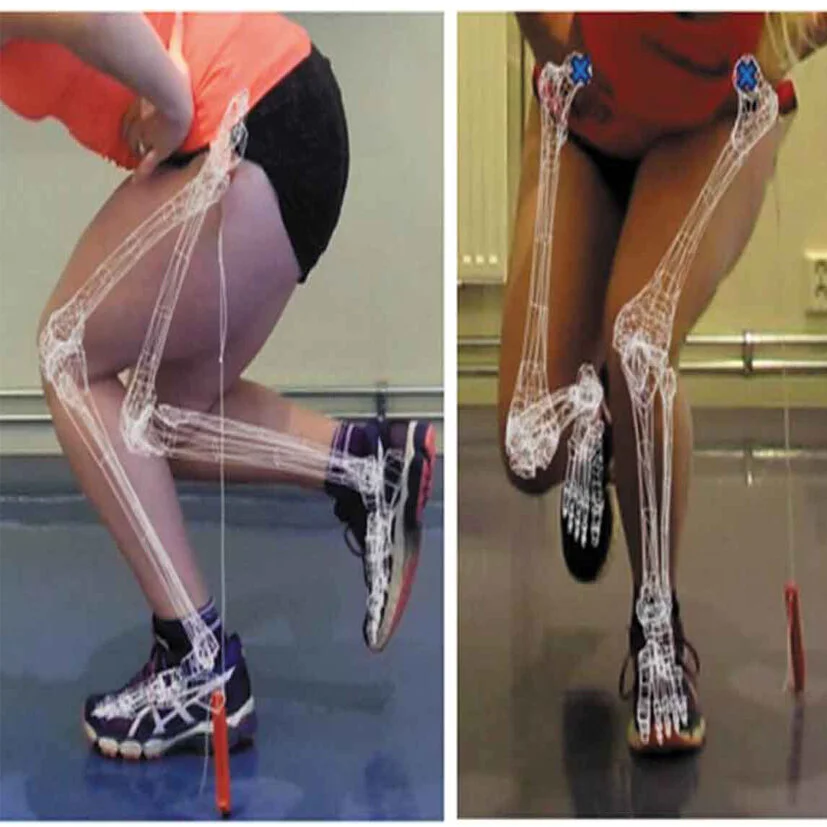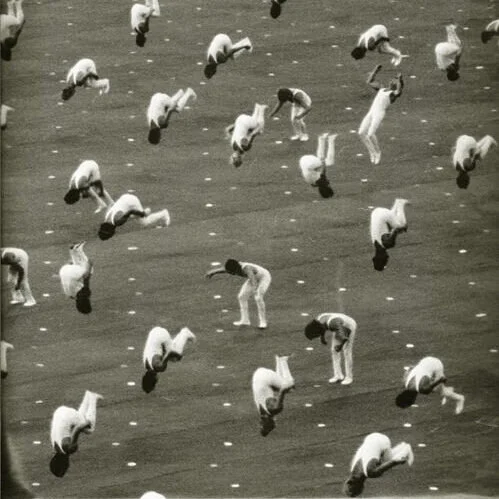Why Are More People Are Falling Over Earlier In Life?
When did you last fall over? It’s something we associate with the very old or the young, but in the last 20 years more there’s been an increase in middle-aged people seeking medical attention as a result of falling with studies showing a sharp increase in falls after the age of 40. Falls used to start to be a problem at age 65, but in the last 20 years we’ve seen that creep earlier and earlier, and now more people in their late 40s and early 50s are seeking medical help because of falls.
There are no definitive reasons as to why these rates are rising, although some researchers speculate it could be due to our increasingly sedentary lifestyles making us less steady on our feet and poor nutrition throughout our life.
Falling is a Sign of Poor Physical Health
Despite what people think, falls aren’t something that ‘just happen’ because you’re getting older and they’re not ‘inevitable’; they are preventable and studies are indicating that middle-age could be the critical life stage for interventions to prevent them. When people have lost the strength to absorb impact or don’t have the reaction speed needed to protect themselves when they fall, they can sustain serious injuries or even die. Falls can create serious long-term health problems and, if our reflexes have diminished, inappropriately landing can cause significant injuries and a loss of confidence which can have devastating long-term effects, reducing mobility and even resulting in a decreased quality of life.- people can hit their head or land in a way that results in serious damage. Once there is a fear of falling, this creates a vicious circle which seriously impedes someones quality of life, they become cautious, anxious and are unable to enjoy activities in the way they used to.
People are starting to fall and break their wrists in their 40s when it used to be the 60s and hip fractures were most common seen around 75 - 80 but now there’s an increase in hip fractures from our late 50s.
Are you balanced?
A lot of people’s solution to deal with poor balance is to avoid putting themselves in situations that create uncertainty and test them. However, avoidance isn’t a great coping strategy and leaves us less resilient and more vulnerable to things happening in the future. Declining mobility and increasing balance issues are not a sign you’re getting older, they’re a sign you need to challenge yourself to improve these traits.
Any unexpected or unexplained falls are a warning sign your stability has decreased and also that you need to work on your balance. There are three types of sensory input we use for balance - visual information about our surroundings, our vestibular system which is the fluid-filled canals of our inner ears and proprioceptors which send signals from our joints (especially our ankles, knees and hips). Our brain has to collate and coordinate information from all of these inputs and decide the most appropriate balance-recovery reactions such as grabbing a handrail, putting our arms out to absorb impact or taking a step. The problem with this is if you haven’t used these unconscious reflexes for years, like most things left unused, they become rusty and in need of tuning up. Just because we developed the correct movement pattern for falling by doing it over and over as children doesn’t mean we’ll retain that over the decades without revisiting it and the more sedentary we are, the more likely we are to have slower reactions.
Facts on falls
The fall rate in the 40-plus age group is up by as much as 20% on the previous generation
Approximately 10-20% of falls result in fractures
1 in 3 adults aged 50 and over dies within 12 months of suffering a hip fracture
1 in 2 women and 1 in 5 men in the UK will experience a fracture after the age of 50
Three times as many women in their 50’s suffer serious, complex wrist bone fractures when compared to men. In their 60s, women are 5 times more likely to suffer these kinds of fractures compared to men
Falls are the second-leading cause of accidental death worldwide
One American study found fatal falls are rising sharply for those aged between 45 and 64, jumping by 44% between 1999 and 2007
Falls are estimated to cost the NHS more than £2.3bn a year and the annual total cost of fragility fractures to the UK has been estimated at £4.4bn
Over 3 million people in the UK have osteoporosis and are at much greater risk of fragility fractures. Fragility fractures are fractures that result from mechanical forces that would not ordinarily result in fracture, known as low-level (or ‘low energy’) trauma
Causes of falls
There’s no single cause for falling, however it is more common in people who have poor motor function, reduced mobility, who are taking certain prescription drugs or suffer from multiple medical conditions. Environmental circumstances can increase the risk for falls - slipping in the bathroom, falling down the stairs or wearing socks on wooden floors create situations where falls are more likely to occur. Lifestyle choices also increase the likelihood of suffering a fall, such as physical inactivity (balance or strength problems), diseases of affluence (obesity, arthritis, diabetes), poor nutrition and poor sleep quality. Biological ageing can also have an impact, when it comes to vision and mobility issues, but people often disproportionately blame their age instead of looking at other factors.
Environmental
Uneven pavement or sidewalks
High or broken street curbs
Poor lighting
Icy pavements or black ice
Inappropriate footwear
Medical
Joint and muscle problems
Difficulties walking
Visual impairment
Nervous system disorders
Medications that cause dizziness
Falls Are a Future me Problem
If it’s true, that the best way to predict the future is to create it, then a lot of us are doing this by kicking the can down the road, to avoid uncomfortable or bad things so our future self has to deal with them.
Many of us grew up as sedentary children, unable to play outside and stuck in our houses playing computer games or on our devices. We don’t know what the effects long-term will be, but it doesn’t take many guesses to assume it’s not going to be particularly beneficial. Although problems set up in childhood aren’t our fault, it’s important that we address them. Balance is something we learned unconsciously when were young, however we wouldn’t have learned it as well if we were sedentary and this means we haven’t built a solid foundation of movement and nervous system integration which act as protective mechanisms and keep us safe from harm. If you’ve never learned to fall in many different places and different ways, you’re not going to have that ability. Physical inactivity causes a huge loss of strength and balance and anyone who sits for more than 8 hours a day is at 30 to 50% greater risk of frailty later on in their life, which comes with falls and balance problems.
Rising levels of obesity of all ages is also thought to contribute to falls happening earlier because being overweight affects stability and balance. Diabetes is also linked with a higher risk of falling, because the condition causes reduced sensations of the extremities.
The other important element to this is maintaining bone density throughout our life. Movement is the catalyst to lay down bone density as I wrote in a previous post:
Our bones tell the story of ‘use it or lose it’ because the more physical activity we do, the denser and more mineralised our bones become.
When people complain that they have grown weaker, when they struggle to open jars and have poor grip strength, these are warning signs telling you to change course. These issues are not set in stone and bone density can be built up again over time. Women, especially, are vulnerable to fragility fractures and osteoporosis after menopause due to changes in their hormonal production coupled with the fact they exercise significantly less throughout their adult lives than men do, so they are less likely to have maintained bone density through movement and activity.
Do your future self a favour and make sure you are moving well and are also eating well because studies are now finally showing that nutrition aids recovery and, at the time of a fracture, poor nutrition reduced people’s ability to walk unaided six months afterwards, compared to those with good nutrition.
falls don’t have to happen in the first place
Healthy lifestyles promotion targeting people aged 40 and older should take place with the aim of preventing or delaying the onset of ill-health amongst older people. Two key health-related behaviours for healthy ageing are maintaining adequate nutrition and physical activity across all domains - aerobic, strength and balance.
This study showed that middle-aged adults who engage in ‘leisure-time physical activity’ reported fewer falls and fall-related injuries and when the University of British Columbia offered a fall prevention home-based strength and balance retraining exercise program, after 12 months falls reduced by 36%.
Prevention is better than cure
Use a cobblestone tray
Learn to fall - there are many sports like martial arts which teach it and more community outreach from healthcare are offering people ways to learn how to fall safely
Use a balance beam
Train yourself out of using the handrail when walking up and down stairs.
Go barefoot at home
Find an evidence-based falls prevention programme through your healthcare provider
Squat more and sit on your sofa less
Get up and down off of the floor without using your hands
Stand on tiptoes
Stand on one leg cleaning your teeth or when waiting for the kettle to boil
Find a sport or activity such as boxing, parkour, dance or martial arts which uses a lot of dark zone movement, is unpredictable and challenges the system
Stand up and walk around regularly throughout the day
REFERENCES
Pahor M. Falls in Older Adults: Prevention, Mortality, and Costs. JAMA. 2019;321(21):2080–2081. doi:10.1001/jama.2019.6569
Liu-Ambrose T, Davis JC, Best JR, et al. Effect of a Home-Based Exercise Program on Subsequent Falls Among Community-Dwelling High-Risk Older Adults After a Fall: A Randomized Clinical Trial. JAMA. 2019;321(21):2092–2100. doi:10.1001/jama.2019.5795
Bergen G, Stevens MR, Burns ER. Falls and Fall Injuries Among Adults Aged ≥65 Years — United States, 2014. MMWR Morb Mortal Wkly Rep 2016;65:993–998. DOI: http://dx.doi.org/10.15585/mmwr.mm6537a2
Vergara, I., Vrotsou, K., Orive, M. et al. Wrist fractures and their impact in daily living functionality on elderly people: a prospective cohort study. BMC Geriatr 16, 11 (2016). https://doi.org/10.1186/s12877-015-0176-z
Public Health England. Public Health Outcomes Framework [Internet]. 2016 [cited 2016 Nov 24]. Available from: www.phoutcomes.info/search/falls5
Nicol S,Roys M, Garrett H, BRE. The cost of poor housing to the NHS . BRE Trust; 2016 www.bre.co.uk/filelibrary/pdf/87741-Cost-of-Poor-Housing-Briefing-Paper-v3.pdf6
Svedbom A, Helmlund E, Ivergård M, Compston J, Cooper C, Stenmark J, McCloskey EV, et al. Osteoporosis in the European Union: a compendium of country specific reports. Arch Osteoporos [Internet]. 2013 [cited 2016 Nov 24];8(1–2).
National Osteoporosis Society. Effective secondary prevention of fragility fractures: clinical standards for fracture liaison services. National Osteoporosis Society; 201514
Parry SW, Bamford C, Deary V, Finch TL, Gray J, MacDonald C, et al. Cognitive-behavioural therapy-based intervention to reduce fear of falling in older people: therapy development and randomised controlled trial -the Strategies for Increasing Independence, Confidence and Energy (STRIDE) study. Health Technol Assess Winch Engl. 2016 Jul;20(56):1–206
The ProFouND, EUFF, EIP-AHA AG2, E-NO FALLS working group. Silver Paper on Falls prevention in Older Age Executive Summary. 2016 Available from: profound.eu.com/wp-content/uploads/2016/12/Silver-Paper-Executive-Summary-Final.pdf25
NICE. Midlife approaches to preventing the onset of disability, dementia and frailty | Guidance and guidelines | NICE. 2016 www.nice.org.uk/guidance/ng1626World report on ageing and health
World Health Organization; 2015 www.who.int/ageing/events/world-report-2015-launch/en/
Abrahamsen B, van Staa T, Ariely R, Olson M, Cooper C. Excess mortality following hip fracture: a systematic epidemiological review. Osteoporos Int. 2009 Oct;20(10):1633-50. doi: 10.1007/s00198-009-0920-3. Epub 2009 May 7. PMID: 19421703.
Haentjens P, Magaziner J, Colón-Emeric CS, Vanderschueren D, Milisen K, Velkeniers B, Boonen S. Meta-analysis: excess mortality after hip fracture among older women and men. Ann Intern Med. 2010 Mar 16;152(6):380-90. doi: 10.7326/0003-4819-152-6-201003160-00008. PMID: 20231569; PMCID: PMC3010729.
Katsoulis M, Benetou V, Karapetyan T, Feskanich D, Grodstein F, Pettersson-Kymmer U, Eriksson S, Wilsgaard T, Jørgensen L, Ahmed LA, Schöttker B, Brenner H, Bellavia A, Wolk A, Kubinova R, Stegeman B, Bobak M, Boffetta P, Trichopoulou A. Excess mortality after hip fracture in elderly persons from Europe and the USA: the CHANCES project. J Intern Med. 2017 Mar;281(3):300-310. doi: 10.1111/joim.12586. Epub 2017 Jan 17. PMID: 28093824.
Gumieiro DN, Rafacho BP, Gonçalves AF, Tanni SE, Azevedo PS, Sakane DT, Carneiro CA, Gaspardo D, Zornoff LA, Pereira GJ, Paiva SA, Minicucci MF. Mini Nutritional Assessment predicts gait status and mortality 6 months after hip fracture. Br J Nutr. 2013 May;109(9):1657-61. doi: 10.1017/S0007114512003686. Epub 2012 Sep 28. PMID: 23017491.
Geeske Peeters, Natasja M. van Schoor, Rachel Cooper, Leigh Tooth, Rose Anne Kenny. Should prevention of falls start earlier? Co-ordinated analyses of harmonised data on falls in middle-aged adults across four population-based cohort studies. PLOS ONE, 2018; 13 (8): e0201989 DOI: 10.1371/journal.pone.0201989
Trinity College Dublin. (2018, August 21). Sharp increase in falls in women during midlife: Middle-age may be a critical life stage for interventions designed to prevent falls, according to researchers. ScienceDaily. Retrieved December 5, 2020 from www.sciencedaily.com/releases/2018/08/180821112024.htm
Global, regional, and national incidence, prevalence, and years lived with disability for 310 diseases and injuries, 1990–2015: a systematic analysis for the Global Burden of Disease Study 2015 https://doi.org/10.1016/S0140-6736(16)31678-6
Peeters G, van Schoor NM, Cooper R, Tooth L, Kenny RA. Should prevention of falls start earlier? Co-ordinated analyses of harmonised data on falls in middle-aged adults across four population-based cohort studies. PLoS One. 2018 Aug 7;13(8):e0201989. doi: 10.1371/journal.pone.0201989. PMID: 30086149; PMCID: PMC6080796.
Peeters G, Cooper R, Tooth L, van Schoor NM, Kenny RA. A comprehensive assessment of risk factors for falls in middle-aged adults: co-ordinated analyses of cohort studies in four countries. Osteoporos Int. 2019 Oct;30(10):2099-2117. doi: 10.1007/s00198-019-05034-2. Epub 2019 Jun 15. PMID: 31201482.
White AM, Tooth LR, Peeters GMEEG. Fall Risk Factors in Mid-Age Women: The Australian Longitudinal Study on Women's Health. Am J Prev Med. 2018 Jan;54(1):51-63. doi: 10.1016/j.amepre.2017.10.009. PMID: 29254554.
Chippendale T, Bhojwani S, Conley M, Dela Cruz F, DiPietro L, Kasser D, Kent R, Lam J, Scrivanich A, Takamatsu A. Falls Experiences and Prevention Preferences of Adults in Mid-life. J Community Health. 2019 Dec;44(6):1160-1167. doi: 10.1007/s10900-019-00703-z. PMID: 31280430.
Cigolle CT, Ha J, Min LC, et al. The Epidemiologic Data on Falls, 1998-2010: More Older Americans Report Falling. JAMA Intern Med. 2015;175(3):443–445. doi:10.1001/jamainternmed.2014.7533
Ylitalo KR, Karvonen-Gutierrez CA. Body mass index, falls, and injurious falls among U.S. adults: Findings from the 2014 Behavioral Risk Factor Surveillance System. Prev Med. 2016 Oct;91:217-223. doi: 10.1016/j.ypmed.2016.08.044. Epub 2016 Aug 26. PMID: 27575319.
Caban-Martinez AJ, Courtney TK, Chang WR, Lombardi DA, Huang YH, Brennan MJ, Perry MJ, Katz JN, Christiani DC, Verma SK. Leisure-Time Physical Activity, Falls, and Fall Injuries in Middle-Aged Adults. Am J Prev Med. 2015 Dec;49(6):888-901. doi: 10.1016/j.amepre.2015.05.022. Epub 2015 Jul 29. PMID: 26232899.
































What are the most common misconceptions about furniture free? Well these are my top three!